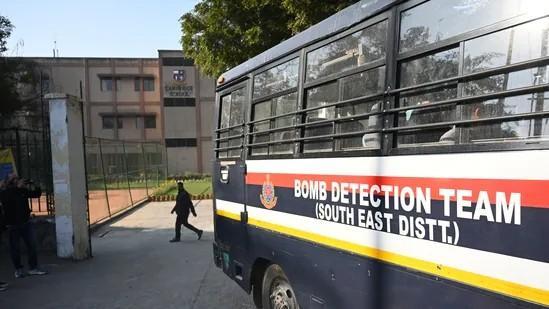 |
|
The recent wave of bomb threats targeting schools in Delhi has concluded with a surprising revelation: the perpetrators were, in fact, students from the very institutions they threatened. Delhi Police investigations have painstakingly uncovered the truth behind these alarming incidents, revealing a pattern of mischievous acts driven by personal motives rather than genuine malicious intent. The cases highlight the complexities of adolescent behavior, the pressures faced by students, and the potential consequences of ill-conceived actions, even those seemingly devoid of malice. The investigation serves as a stark reminder of the need for improved mental health support within educational institutions and a greater understanding of the underlying factors contributing to such disruptive behaviors.
One particularly illustrative case involves two brothers who, feeling unprepared for upcoming examinations, orchestrated a bomb threat in a desperate attempt to postpone the assessments. The pressure of academic performance, the fear of failure, and the perceived lack of alternative solutions led these students to resort to a drastic and potentially illegal measure. This highlights a systemic issue within the educational system – the intense pressure placed upon students to achieve high grades, often at the expense of their mental well-being. The lack of readily available support mechanisms, such as counseling services and flexible examination policies, leaves vulnerable students feeling trapped and resorting to desperate measures to alleviate the pressure. This incident underscores the critical need for schools to foster a more supportive and understanding environment that prioritizes students’ mental health alongside academic achievement.
Another case involved a student who desired a transition to online classes. The reasons behind this preference remain unclear, but the act of resorting to a bomb threat to achieve this goal reveals a significant disconnect between the student's needs and their understanding of appropriate channels for expressing those needs. This case underscores the importance of open communication between students and school administration. A more proactive approach to addressing student concerns, perhaps through improved student feedback mechanisms and more accessible avenues for voicing grievances, could potentially prevent future incidents of this nature. Furthermore, the incident also highlights the challenge schools face in maintaining a safe and secure learning environment while also catering to the diverse needs and motivations of their students. This requires a multi-faceted approach, including improved security protocols, robust communication strategies, and a commitment to fostering a culture of open dialogue and understanding.
The Delhi Police's investigation into these cases not only shed light on the motivations behind the threats but also serves as a crucial learning opportunity. It exposes the vulnerability of educational institutions to internal threats and highlights the need for improved security measures and mental health support within schools. The investigation also underscores the need for parents, teachers, and school administrators to engage in open dialogue with students, creating a safe space for them to express their concerns and seek help without resorting to extreme measures. The long-term implications of these events extend far beyond the immediate consequences for the students involved. The incidents raise questions about the effectiveness of current educational practices, the pressure placed on students, and the overall mental health support systems available within schools. Moving forward, it is crucial to address these systemic issues to prevent similar incidents in the future.
This incident is a call for a comprehensive review of school policies and procedures concerning student stress and mental health. It’s a reminder that while security measures are essential, a more holistic approach that addresses the underlying causes of such actions is needed. This might include implementing comprehensive mental health programs, offering regular counseling sessions, and establishing more open communication channels between students and school authorities. The focus should be on creating a supportive learning environment that prioritizes the well-being of every student, allowing them to express their concerns in a healthy and constructive way, thus mitigating the risk of future incidents driven by desperation or a lack of understanding.
